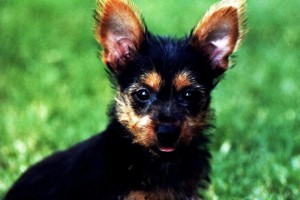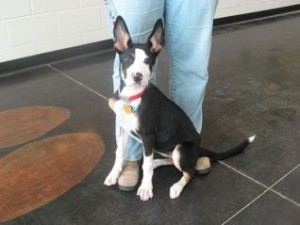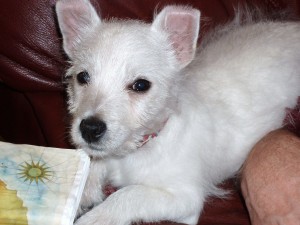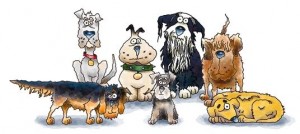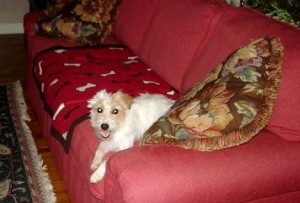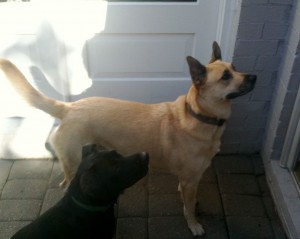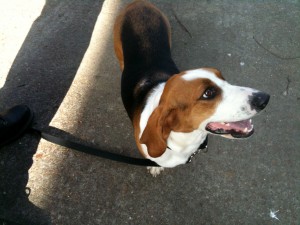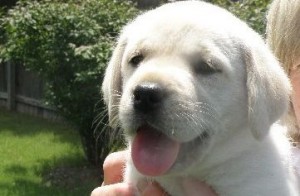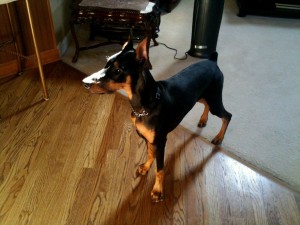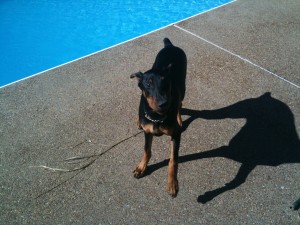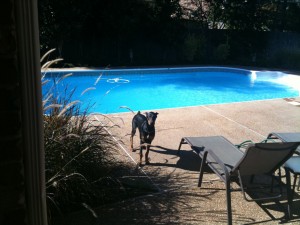Fact #1: Forget about alpha and pack.
A nine year old child, or a 85 year old grandparent in a wheelchair, can teach and control any dog by following a few, simple, kind rules. There is an excellent, simple way to teach your puppy, and it has nothing to do with alpha or dominance. As neat as it sounds, your family is not in some sort of mythical pack with your dog. You do not compete with your puppy for food, territory or reproduction rights. You do not have to intimidate your puppy into submission. That little guy wants to be your friend!
Fact #2: : Mother Nature will potty train your puppy.
97.3% of the millions of dogs who ask to go outside, were never taught to go to the door and ask. Mother Nature did it! The dogs just naturally ask, without any training from humans. Puppies get house trained as a result of a natural, built -in process known as classical conditioning. It has little to do with consequences, scolding or tasty treats. Yes, your actions can enhance potty training, or your actions can unknowingly teach your puppy to pee and poop inside the house. But, the truth is, nature is responsible. Follow two simple rules, and let nature take its course. Your puppy will “become” house trained.
Fact #3: You have 12 -16 weeks to create a friendly adult dog.
Events during the first few months of your puppy’s life will determine if your adult dog will be a social butterfly or a frightened, shy, neurotic, anxious dog.
***********Every certified applied animal behaviorist is familiar with the mid, 20th century, classic 20-year study of genetics and the social behavior of dogs at Jackson Laboratory in Bar Harbor Maine.
John Paul Scott and John L. Fuller proved that events and exposures (or lack of events and exposures) during a critical period of socialization affect a dog for life. The critical period of socialization for domestic puppies begins when the ear canals open (about 21 days) and ends at 12 -16 weeks. ********
Here are four simple things you can do right now to introduce your young pup to the good life with a capital “L”.
- Have your puppy meet 10 new people each day
- Pop open an umbrella – – – just so he won’t be startled when he sees one spring open later
- Tune into the Cartoon Channel and turn up the cartoons: What an excellent way to get your turbo puppy used to loud, unpredictable noises!
- Race around your living room on crutches
The idea is to let your young puppy see, hear, feel, and experience everyday events, along with life’s surprises, at a very early age.
There are many easy things you can artfully do to raise an easy-going dog who will experience the ups and downs of life as a natural unfolding of events.
Take advantage of this 16 week
critical window of opportunity.
You will be glad you did!
Fact #4: Your puppy already knows how to come, sit, and lie down
Your puppy already knows how to do every basic obedience command. You just haven’t found the best way to ask your puppy, and you’re not quite sure how to kindly motivate your puppy to want to perform for you. . . (keep reading and you will know). . . Anyone can learn how to kindly tell their dog WHEN, WHERE, HOW LONG, and WHY to perform basic commands. It’s easy and it’s not a secret. You will succeed when you start off right with your puppy. Nurture a relationship based on trust, consistency, clear communication, and rewards for cooperation.
Fact #5: Puppies and dogs do not hang their heads in shame
When your puppy hangs her head and lowers her body, she is not saying, I’m sorry. She is saying, “Please do not attack me, I mean you no harm”. Some of you may be thinking, “but she lowers her head before I even talk to her.” Puppies are observant and smart. They quickly learn to read situations and human body language. Dogs know more about human body language than most humans. But this does not mean they feel guilty or know right from wrong? If you do not believe me, walk up to your puppy when she has done nothing wrong. Use the same body language and tone as you do when there is a mess on the floor. She will lower her head. Does that mean she knows she’s done something wrong?
Fact #6: There are no dog training secrets in this world; you too can be an expert.
Dog training gurus want you to think only they have the secret. Hogwash. There are hundreds of books about dog training. Unfortunately, many of the books are written by people who gained their information from reading other books. Outdated, 20th century information is being sold as new and improved! One reason I studied companion animal behavior and learning, (and canine abnormal behavior modification), was to be able to sort trendy, well marketed information, from realistic everyday solutions with accurate information that applies to all dogs and all owners.
Your search is over. I can help.
The problem you new owners are facing is you don’t have time to sift through volumes of information. It’s tough to find dog-friendly, 21st century information from an expert . . . especially one who has the experience to back up his words. I work with all kinds of animals: happy, exuberant, fearful, shy, aggressive, and compulsive.
As of June 10, 2019, I have helped 2,621 pet owners. 25% of my clients have naughty dogs with aggressive, anxious and fearful behaviors. Veterinarians refer the new puppy and the crazy dog behavior cases to me, because I get good results. I get these results using kind, consistent, easily taught techniques. That number continues to rise, because this is my full time job.
I will give you the benefit of all my experience and education. When it comes to enjoyable, healthy relationships with our animal friends, there should be no secrets.
Alan J Turner
How’s Bentley’s Gateway to Free Articles and Serives
Memphis TN

